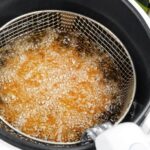Water is a fundamental necessity for human survival, as it plays a critical role in functions ranging from temperature regulation to joint lubrication and nutrient absorption. Given our constant fluid loss through sweat, urination, and even respiration, the body has evolved complex mechanisms to maintain optimal hydration. Yet, recent studies indicate that one of our most basic biological signals—thirst—may not always be a reliable predictor of dehydration.
Understanding Thirst and Its Mechanism
The sensation of thirst, characterized by a feeling of dryness in the mouth, is controlled by the hypothalamus, a part of the brain responsible for regulating basic bodily functions. The hypothalamus receives signals from different parts of the body about fluid levels and triggers thirst when it detects a need for more water. This physiological drive prompts us to drink and helps balance fluid loss. However, research shows that thirst levels don’t always align with actual hydration status.
What Dehydration Entails
Dehydration occurs when fluid levels in the body drop below the necessary threshold. Even mild dehydration can lead to symptoms such as headaches, dizziness, and difficulties in concentration. Chronic dehydration carries more serious risks, including urinary tract infections, constipation, and kidney stones. Proper hydration is essential for many bodily functions, such as maintaining temperature, lubricating joints, aiding digestion, and even supporting brain functions like memory and focus.
New Research on Thirst and Hydration
In a recent study, researchers examined how thirst relates to actual hydration levels by measuring participants’ fluid intake and hydration status over the course of a day. Surprisingly, the data revealed a weak correlation between the sensation of thirst and participants’ actual hydration status, as measured by urine and blood samples, as well as body weight.
Other research further underscores this disconnect, suggesting that factors beyond thirst may influence our fluid intake. For instance, environmental availability of water has been shown to play a significant role. In one study, participants who had easy access to water drank more, regardless of their thirst levels, indicating that accessibility rather than bodily need may prompt people to drink.
Exercise can also interfere with thirst mechanisms. Although research is limited, some studies suggest that the body may not always prompt sufficient thirst after intense physical activity, leading to potential dehydration if not monitored.
Gender Differences in Thirst Perception
Interestingly, research highlights gender differences in how thirst is perceived and acted upon. Women tend to experience thirst at a lower level of fluid loss compared to men and often respond more promptly by drinking water. This finding points to possible variations in physiological or hormonal responses to hydration needs across genders, which could have implications for hydration recommendations.
Beyond Thirst: Other Indicators of Hydration
Given the limitations of thirst as a hydration cue, experts recommend using other indicators to gauge hydration status:
- Urine Color: Pale yellow urine generally signifies good hydration, while darker urine may indicate dehydration.
- Frequency of Urination: Regular urination (approximately four to six times a day) is a sign of adequate hydration. Infrequent urination can signal dehydration.
- Skin Turgor: A quick skin turgor test—pinching the skin and observing how fast it returns to normal—can reveal hydration levels. A slow return suggests dehydration.
- Dry Mouth and Cracked Lips: These are often early indicators of dehydration.
- Headaches and Fatigue: Frequent headaches, dizziness, and fatigue may signal a need for more water.
- Sweating: For those who are physically active, monitoring sweat levels can help estimate fluid loss and hydration needs, as higher sweat rates increase the risk of dehydration.
Striking a Balance
While thirst remains a valuable cue, these additional indicators provide a fuller picture of hydration. Experts generally recommend around eight cups (two liters) of water daily, though individual needs vary. For those who often forget to drink until they feel parched, monitoring these signs may improve hydration management, ensuring the body gets the water it needs to function optimally.
In short, while thirst serves as a natural prompt to drink, it is not always an accurate measure of hydration. By combining thirst with other physical signs, people can better meet their hydration needs, supporting overall health and well-being.











